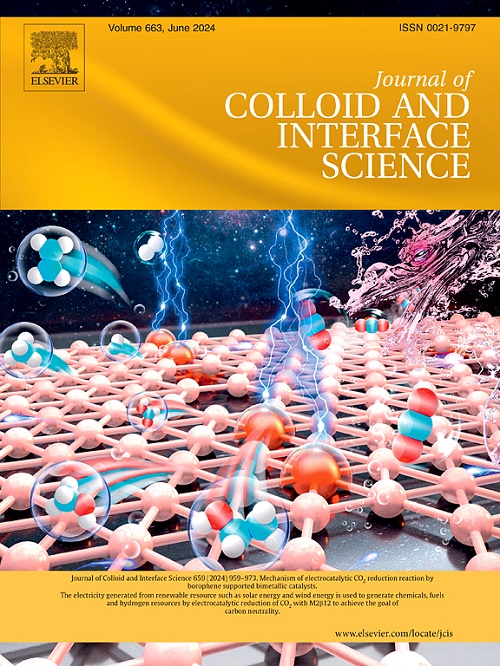Constructing a multisite catalyst for achieving efficient and highly selective borohydride oxidation reaction
IF 9.7
1区 化学
Q1 CHEMISTRY, PHYSICAL
引用次数: 0
Abstract
It is crucial to develop efficient and inexpensive borohydride oxidation reduction (BOR) electrocatalysts for the practical application of direct borohydride fuel cells (DBFCs). However, until now, there is still rare electrocatalyst that can simultaneously achieve a high BOR rate, high faradaic efficiency, and low BOR onset potential. In this work, we reported an efficient multisite catalyst CoFe&AuC, with a peak power density of 580 mW/cm2 in DBFC (Air as oxidant), which is 2.8 and 4.3 times higher than CoFe&C (210 mW/cm2) and AuC (136 mW/cm2), respectively. Meanwhile, CoFe&AuC also shows a peak power density of 1371 mW/cm2 in DBFC with O2 used as an oxidant. Notably, CoFe&AuC exhibits a high electron transfer number (5.4) and fuel efficiency (65.6 %), suggesting the high selectivity for BOR. In situ spectroscopy combined with density functional theory (DFT) calculations indicate that the enhanced BOR activity can be attributed to the tandem effect between different components: the rapid adsorption and initial oxidation of BH4− to BH3 species on CoFe LDH and the further oxidation of BH3 species on Au nanoparticles, which efficiently break the bottleneck of Au catalyzing BH4−. This work provides a novel pathway for designing multisite electrocatalysts with high BOR activity and selectivity.

构建高效、高选择性硼氢化物氧化反应的多位点催化剂
开发高效、廉价的硼氢化物氧化还原(BOR)电催化剂是直接硼氢化物燃料电池(dbfc)实际应用的关键。然而,到目前为止,仍然很少有电催化剂能够同时实现高BOR率、高法拉第效率和低BOR起病电位。在这项工作中,我们报道了一种高效的多位点催化剂CoFe&;AuC,其在DBFC(空气作为氧化剂)中的峰值功率密度为580 mW/cm2,分别比CoFe&;C (210 mW/cm2)和AuC (136 mW/cm2)高2.8和4.3倍。同时,CoFe&;AuC在以O2为氧化剂的DBFC中也显示出1371 mW/cm2的峰值功率密度。值得注意的是,CoFe&;AuC具有较高的电子转移数(5.4)和燃油效率(65.6%),表明对BOR具有较高的选择性。原位光谱结合密度泛函理论(DFT)计算结果表明,不同组分之间的串接效应增强了BOR活性:BH4−在CoFe LDH上的快速吸附和初始氧化为BH3, BH3在Au纳米颗粒上的进一步氧化,有效地打破了Au催化BH4−的瓶颈。本研究为设计具有高BOR活性和选择性的多位点电催化剂提供了新的途径。
本文章由计算机程序翻译,如有差异,请以英文原文为准。
求助全文
约1分钟内获得全文
求助全文
来源期刊
CiteScore
16.10
自引率
7.10%
发文量
2568
审稿时长
2 months
期刊介绍:
The Journal of Colloid and Interface Science publishes original research findings on the fundamental principles of colloid and interface science, as well as innovative applications in various fields. The criteria for publication include impact, quality, novelty, and originality.
Emphasis:
The journal emphasizes fundamental scientific innovation within the following categories:
A.Colloidal Materials and Nanomaterials
B.Soft Colloidal and Self-Assembly Systems
C.Adsorption, Catalysis, and Electrochemistry
D.Interfacial Processes, Capillarity, and Wetting
E.Biomaterials and Nanomedicine
F.Energy Conversion and Storage, and Environmental Technologies

 求助内容:
求助内容: 应助结果提醒方式:
应助结果提醒方式:


